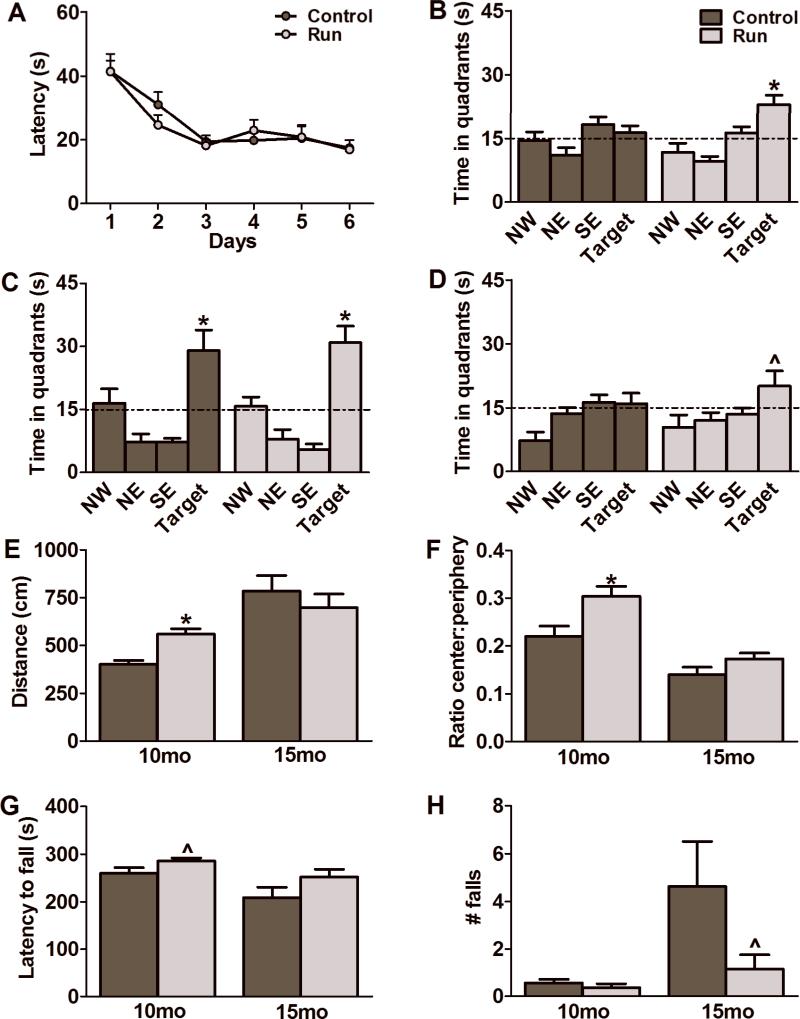Figure 2.
Effects of short and long-term running paradigms on cognitive, locomotor and anxiety-related behaviors. Morris water maze training (A) and a 24-hr probe trial (C), to test for retrieval of spatial memory, after 1 month of running showed no difference between the groups (N=9-10 per group). At 6 months after housing with a running wheel, the runners, unlike the controls, showed a clear preference for the target quadrants on the 4-hr (B) and the 24-hr (D) probe trials (N=9 per group). At the 1 month timepoint, runners displayed significant improvements on performance in the open field in terms of distance travelled (E) and a greater percentage of distance travelled in the center versus the peripheral area of the arena (F) compared to controls (N=9-10 per group) . These effects were no longer apparent after 6 months of running (E,F) (N=9 per group). Though not significantly different, the rotarod performance of the runners indicated strong trends towards an increase in the latency to fall (G) at 1 month (N=9-10 per group) and a decrease in the number of falls (H) at 6 months (N=9 per group) compared to controls. Data represents the mean ± SEM. (*p<0.05; ^ represents a strong trend). Dashed lines in B, C and D represent 15 seconds or one quarter of the time allotted for completion of the probe trial.

